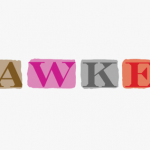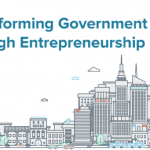here is What It looks like When A Startup Wins large at Y Combinator
the primary stage of YC success is fundraising. How Mashgin went from a pitch to more than $1 million in seed funding in four industry days.
April 9, 2015
“the only factor you want to keep in mind that about this presentation,” Abhinai Srivastava began during his time on stage at Y Combinator’s Demo Day remaining month, “is that we not too long ago signed a letter of intent with the potential of $50 million per 30 days.”
that’s how Srivastava, a 35-yr-outdated veteran of Microsoft and fb, began his Demo Day presentation. In case any of the 500 or so buyers and journalists at the invitation-only experience overlooked it, he repeated the commentary once more, talking haltingly but with a wide smile that projected one thing approaching self belief. “That’s $50 million,” he said. “U.S. dollars. per month.” His cellphone began vibrating in his pocket even sooner than he finished his two-and-a-1/2 minute pitch.
by the point Srivastava walked off the stage, his email inbox was already stuffed with investor queries. He spent the next few hours showing off the self-checkout kiosk that his company Mashgin sells, and that Srivastava believes will revolutionize how we shop and pay for stuff at outlets. as an alternative of scanning bar codes or dealing with a clerk, customers simply put their stuff in a breadbox-sized instrument for lower than 1/2 a second after which swipe a credit card. “all and sundry was once looking to spoil it,” he says, regarding Demo Day attendees who tried out the mock storefront he set up in a nearby room. they’d location gadgets into the box upside down or sideways to be able to fool the computing device. “nevertheless it does not smash.”
the next week, he and cofounder Mukul Dhankhar (who also occurs to be Mashgin’s inventor and the company’s most effective other full-time employee) closed an funding spherical, becoming the first startup in Y Combinator’s present batch of 114 corporations, which I’ve been following considering that January as part of a fast company series, to announce that they’d executed so after Demo Day. although YC’s partners and alums shy away from publicly discussing the importance of fundraising—partly because one of the best ways to lift a lot of money is to inform investors you don’t want cash—that is not directly the purpose of the three-month software: to arrange each startup with sufficient funding to permit it to grow into a significant firm.
Srivastava won’t say what quantity of money precisely the corporate took in, but he says the figure was once neatly over $1 million. and because Srivastava, like most YC CEOs, used a collection of entrepreneur-friendly financing paperwork created with the aid of YC’s lawyers, it’s probably that he bought the money at phrases that only some years in the past would have been considered extremely favorable, even supposing Mashgin has yet to ship a business product and that it’s attempting to supply a fully new piece of hardware to a market that has no longer historically been the primary to embody new applied sciences. Srivastava and Dhankhar took their first meeting the Thursday after their Tuesday pitch and closed the round by way of the next Tuesday. “It was overwhelming,” says Srivastava. “the money is in the bank.”
Mashgin was once born in 2012, when Dhankhar, who’d previously labored on Toyota’s humanoid robots, commenced tinkering with an idea to pair less expensive digital cameras with refined 3D-imaging algorithms to quick establish general home items. “It was once a simple webcam hooked up to a computer,” recollects Srivastava, who first met Dhankhar after they were both college students at the Indian Institute of technology in Delhi and who noticed an early demo in 2013. “He puts a lemon in front of it, and the reveal says ‘lemon’.” He puts his keys up, and it says ‘keys’. He places a pen, and it says ‘pen’. I checked out it and said, ‘that is the long run.’”
Dhankhar grew to become this bit of science fiction right into a working prototype with the lend a hand of Highway1, the hardware incubator based via outsourcing massive PCH international. Srivastava joined the company full time, as CEO, at the end of remaining year. the 2 men felt like they were prepared to begin raising cash—and even got a number of bites from buyers—but they felt misplaced at sea. Srivastava wasn’t sure how much to ask for, what their company used to be worth, or how to give protection to the company from presumably exhausting terms. “It was once one of the vital hardest things we’d ever done,” Srivastava says. “We truly, truly needed anyone to suggest us.”
On a whim, he crammed out an application to Y Combinator in late December 2014. despite the fact that Mashgin had missed the cut-off date through two months, YC makes exceptions for corporations that seem like winners—and beneath new YC president Sam Altman, there was a unique emphasis on companies that are growing hardware to maintain exhausting issues. via January, the two men have been attending YC’s Tuesday evening dinners and had thrown out their old increase plans in prefer of more bold ones.
because Mashgin’s product will indirectly be sold to large meals-service companies and grocery chains, the company would not be capable of mimic the hypergrowth that some YC startups finished all the way through this system. as an alternative, Srivastava all for getting letters of intent from large retailers who agreed to buy the product if Mashgin could show to them that it worked. They amassed plenty of commitments for pilot packages, the biggest being the that you can think of $50 million-per-month deal he mentioned on stage. the 2 males additionally took a number of meetings with traders beforehand of time and labored with YC’s companions to polish their pitch. Srivastava tells me that previously he’d struggled to bring his personal excitement about Mashgin’s product to traders, however YC’s partners helped him see that he should be explaining Mashgin to billion-buck undertaking-capital dollars the same way he’d discuss in regards to the firm to his pals. “That used to be one of the largest learnings,” he says. “Now, after we go to investor meetings, we don’t take a pitch deck.”
part of what permits Srivastava and his friends this informality is that Y Combinator’s Demo Day has became the unsure (and fraught) art of fundraising into a highly mechanized process. As I wrote two weeks ago, the name itself is an anachronism: Founders not “demo” their products as so much as announce themselves to the world and watch for the funding offers to flow in, once in a while in the room itself. “That’s the fascinating factor about YC: You hear a two-minute presentation, you shake hands, and $100,000 moves from one individual to the opposite,” says Kyle Vogt, the cofounder of Justin.television, which become Twitch, and the driverless car startup Cruise. Vogt says Cruise’s early investors included some who made handshake commitments on Demo Day itself, together with avowed germaphobe (and TechCrunch founder) Michael Arrington. “I stated, ‘Let’s shake on it,’” Vogt recalls. “He hesitated, however he did it.” The apply has develop into standard sufficient that, two years in the past, YC founder Paul Graham published a formal handshake-deal protocol, a step-by-step manner designed to make it harder for buyers to renege on a commitment.
Mashgin didn’t do any handshake deals at Demo Day, however Srivastava did profit from some other YC fundraising innovation: shortly prior to Demo Day, attendees obtain a hyperlink to an online software that features a checklist of companies and a Tinder-model matching mechanism. someone focused on a given presentation can click a Like button throughout the app, which sends an email alert to the entrepreneur. Mashgin acquired 100 such leads on Demo Day, and Srivastava and Dhankar sifted thru them to arrange 30 conferences over four days. They got here prepared with a dollar amount they hoped to lift and a proposed valuation. as a substitute of dancing around terms, Srivastava fascinated by describing the corporate’s ambitions, and offered investors he favored with a take-it-or-depart-it supply. “We picked a host, and stuck with it,” he says.
despite having greater than 1,000,000 bucks within the bank, Srivastava tells me that he and Dhankhar haven’t had a chance to celebrate—and even to compensate for sleep. the first order of business might be hiring workers to lend a hand deliver their product to market, and then they will have to work to get their would-be clients to actually follow thru on these letters of intent.
Y Combinator is over. but the marathon enterprise of establishing a great company is actually simply starting.
subsequent Week: YC president Sam Altman reveals his vision for the brand new Y Combinator. This is a component 14 in a collection.
(195)














